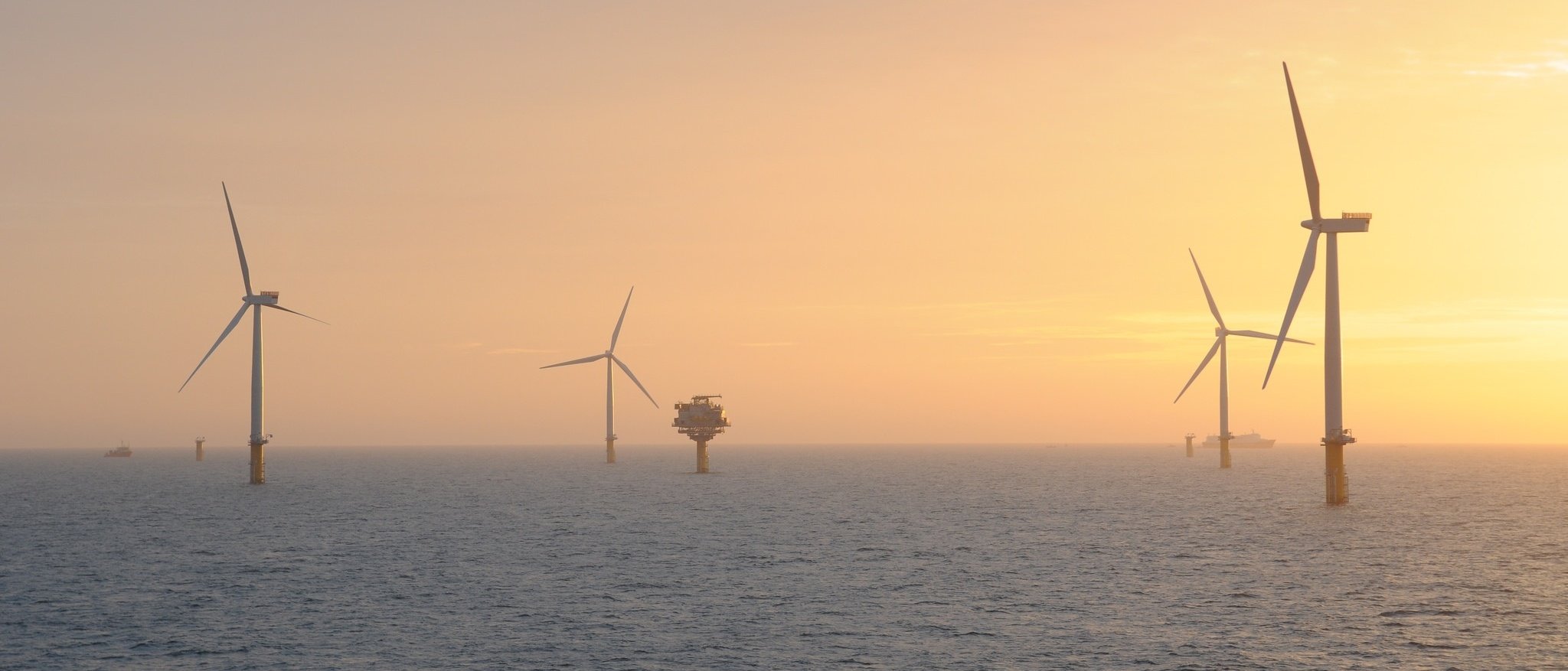This post is one in a series featuring the complete slate of advanced energy technologies outlined in the report This Is Advanced Energy.

Offshore wind off the coast of England. Via.
Offshore wind turbines are very similar in design to land-based large-scale turbines. They are located in bodies of water where there is access to stronger, steadier wind resources than are typically available on land. Generally, the turbines are fixed directly to the bottom of a lake or ocean, although technologies are being developed to mount turbines on floating platforms, which will enable deployment in deeper water or farther offshore. Because of the higher expense of foundations and installation compared to land-based wind turbines, offshore wind farms generally feature larger turbines to minimize infra- structure requirements. Offshore wind turbines are typically 3-5 MW in size, but Vestas has installed 8 MW turbines, and even bigger turbines (10-15 MW) are under development.
As of 2014, there were 104 operational offshore wind farms worldwide with a total capacity of 7 GW. Recent data suggests that U.S. offshore wind potential along the coasts and in the Great Lakes is more than 4,000 GW – approximately four times total current U.S. electricity generation capacity. While there are no operational offshore wind farms in the United States, in April 2015, Deepwater Wind, a U.S.-based offshore wind company, began construction of the first U.S. offshore wind farm off the coast of Rhode Island. The project will include five turbines totaling 30 MW of capacity, and is expected to produce enough electricity to meet the needs of about 17,000 homes. Including Deepwater Wind, there are 14 projects with a planned total capacity of nearly 4.9 GW at an advanced stage of development in the United States.
Offshore wind farms are more expensive to install than land-based projects, resulting in a higher estimated levelized cost of energy ($162/MWh compared to $37-$81/MWh for onshore wind). However, offshore wind farms generally capitalize on stronger and more reliable wind resources and are often located closer to large coastal population centers, reducing the need for long-distance transmission. In the United States, the shallower waters in the Atlantic make the East Coast more economical and attractive for offshore wind development in comparison to the Gulf of Mexico and the Pacific Coast, where deeper waters make it more difficult to build. As with marine and hydrokinetic power, offshore wind power offers the potential to bring new economic activity to coastal industries, such as ports and shipbuilding, during all phases of a project, from development to construction to operation.
